Zhuge Liang is credited with inventing the wheelbarrow in ancient China. Liang worked for the Hans state in the 3rd century AD. During the Hans state campaign against the state of Cao Wei, Liang invented the wooden ox to transport military supplies to the soldiers on the battlefield. Over time the design of the wheelbarrow was improved to increase its load and reduce the amount of energy needed to pull or push it. This article expounds more on the history and uses of the ancient Chinese wheelbarrow. Read on to learn more!
What is wheelbarrow in ancient china?
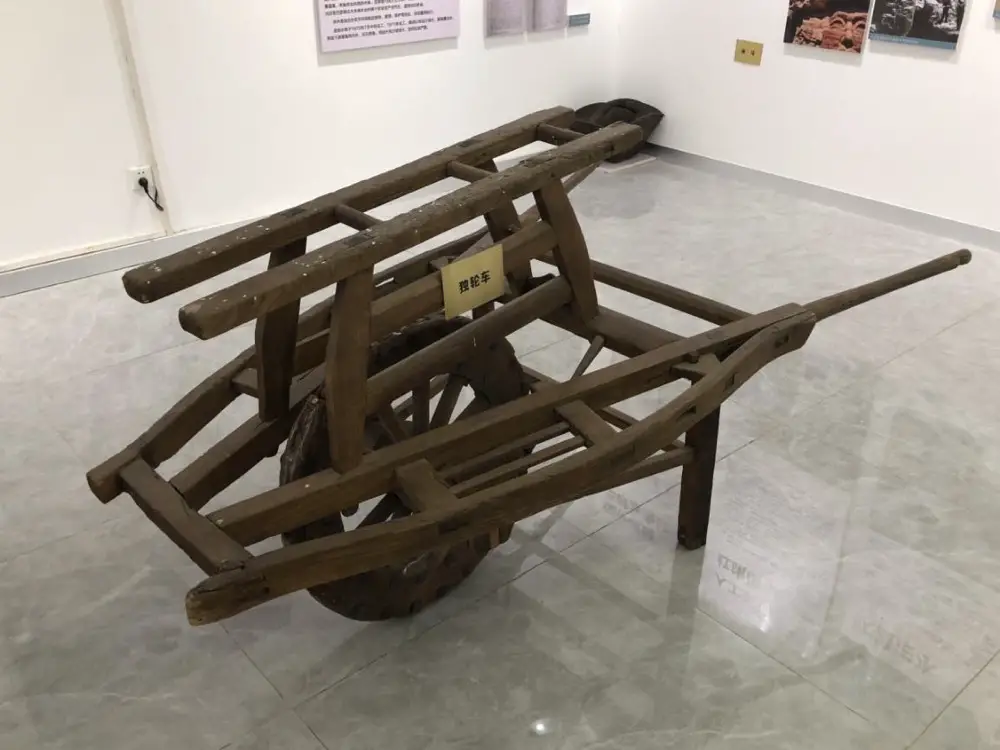
The wheelbarrow was called a wooden ox in ancient China. The wooden ox is a one-wheeled pull cart featuring two handles. It allowed one person to transport enough food to feed four others for not less than three months. The invention of the wooden ox allowed the government to feed large armies on the battlefield. It was pulled from the front, similar to how the ox pulls the poke while tilling the land. The wheelbarrow is commonly referred to as a lu che in most records.
Wheelbarrow history china
Who invented the wheelbarrow?
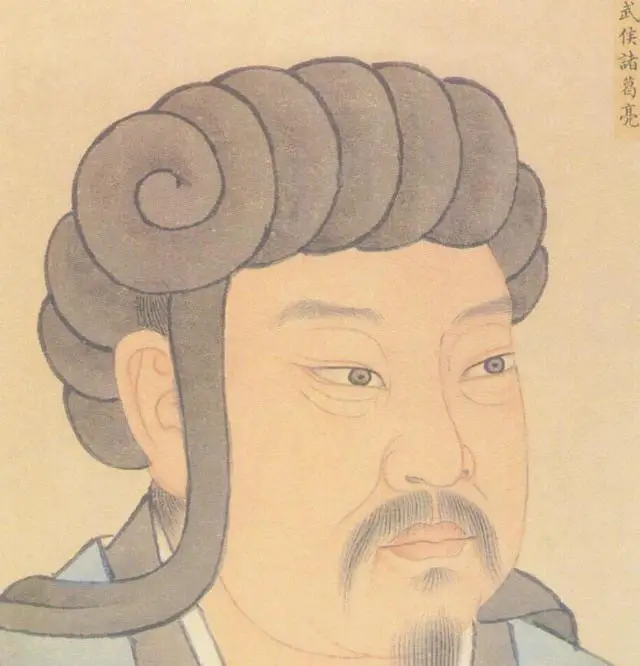
The invention of the wheelbarrow (wooden ox) in ancient China is, in most cases, credited to Zhuge Liang. He invented the wheelbarrow during his service to the Han state in 230 CE. However, there exist records of the use of a basic wheelbarrow, centuries earlier on stone carving dating back to 206 BCE.
When was the ancient Chinese wheelbarrow invented?
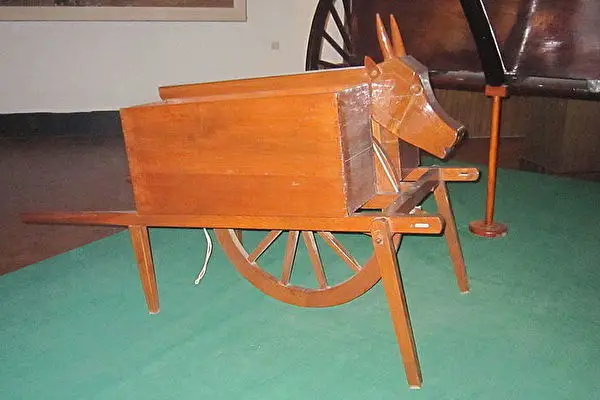
The Chinese historical book of the Sanguozi, which Chen Shou compiled during the 3rd century AD, states that the ancient Chinese wheelbarrow was invented by Zhuge Liang between 197 and 234 during his service to the Shu Han government. The text states that in 231 AD, Prime Minister Liang created a wooden ox. The wooden ox was then used to transport military supplies in the Han state’s campaign against the state of Cao Wei.
However, earlier records suggest that the ancient Chinese wheelbarrow existed centuries before Liang invented the wooden ox. For instance, the earliest evidence of the existence of a one-wheeled car (wheelbarrow) is found on Emperor Hui’s tomb, Murals, as well as on the tomb reliefs; he ruled during the 2nd century AD. One of the murals is of a man pushing a wheelbarrow. The tomb is dated 118 AD. A stoned carved sculpture of a person pushing a one-wheeled cart was found in Shen Fujun’s tomb, dating back to about 150 AD. Also, on Wu Liang’s tomb, dating back to 147 AD, is a pictorial narrative of Don Yuan carrying his father in a barrow (lu che). In addition, earlier accounts dating back to the first century AD and first century BC mentioning lu che might also be referring to the ancient Chinese wheelbarrow.
Also, records of the use of the lu che in ancient China exist in the fifth-century “Book of Later Han,” where it is stated that around 30 BC, the imperial censor Bao Xuan was aided by his newly wedded wife to push a lu che back to his home village during their wedding day. Another record of the use of a lu che is in 20 AD during the Red Eyebrows Rebellion, where official Zhao Xi saved his wife’s life by disguising himself and carrying her in a lu che past a group of rebels. Therefore, although the invention of the ancient Chinese wheelbarrow is mostly credited to Liang in the 3rd century AD, it is not clear exactly when the wheelbarrow was invented.
What was the ancient Chinese wheelbarrow made out of?
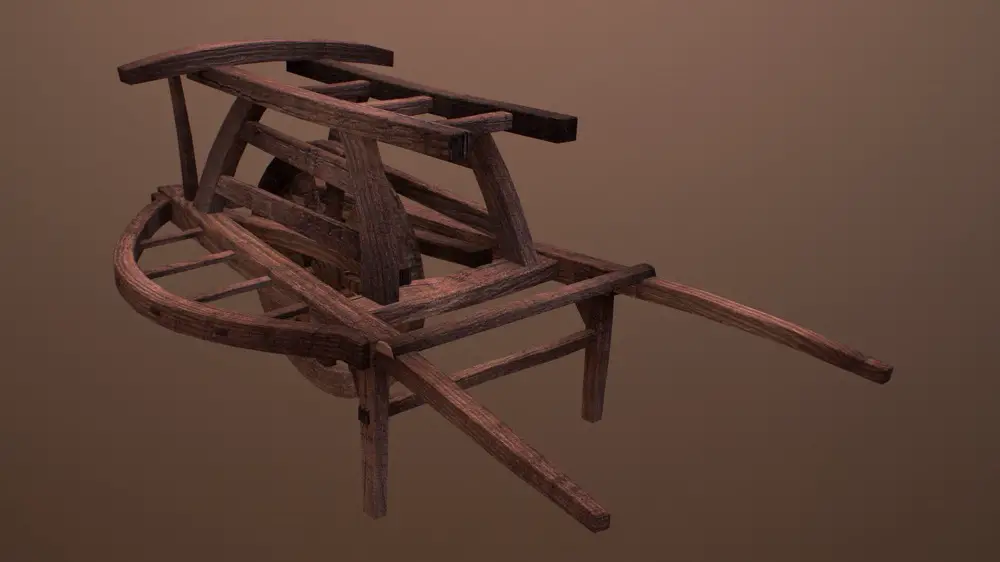
As the name suggests, the ancient Chinese wheelbarrow (wooden ox) was made of wood. In his text dated 430 AD, Pei Songzhi states that the ancient Chinese wheelbarrow had a central wheel and an axle on which the wooden frame was constructed. The wheelbarrow’s design was a representation of an ox.
How was the wheelbarrow made in ancient china?
The ancient Chinese wheelbarrow had a centrally placed wheel. Pei Songzhi describes in his 430 AD text that the wheelbarrow has a large central wheel. Another feature of the barrow was an axle around which a wooden frame was built. In his 11th-century text, scholar Gao Cheng wrote that the small Chinese wheelbarrows used during his time had a shaft that pointed forward; therefore, it was pulled. He stated that the wheelbarrow’s design was the same as that of Zhuge Liang’s wooden ox. However, in the 3rd century, the gliding horse wheelbarrow was made. This new wheelbarrow featured a backward-facing shaft and was pushed.
What was the wheelbarrow used for in ancient china?
Ancient Chinese wheelbarrows were used to transport heavy loads from one point to another using less effort. For instance, Liang’s wooden ox was used to transport military supplies in the Han state’s campaign against the state of Cao Wei in the 3rd century AD. The wheelbarrow could transport enough food to sustain four people for not less than three months. Also, wheelbarrows were used to transport human passengers. The ancient Chinese wheelbarrow that had a centrally placed wheel, used during the 3rd century AD, had a six-passenger capacity.
Why was the wheelbarrow important in ancient china?
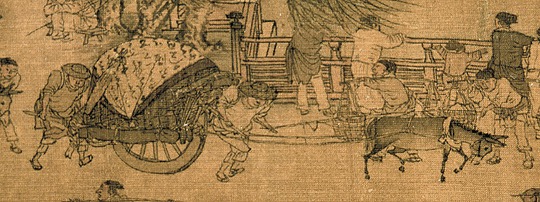
The wheelbarrow was very important in ancient China because it made it easier to move a large load from one place to another. An example is Liang’s wooden ox which was used to transport military supplies in the Han state’s campaign against the state of Cao Wei in the 3rd century AD. With the wheelbarrow, Han state servants could transport enough food to feed the entire army. One wheelbarrow carried enough food to feed four soldiers for about three months. Larger wheelbarrows were also used to move people from one point to another. An example is a centrally wheeled barrow which could carry six people at a go.
Conclusion
Zhuge Liang is credited with inventing the ancient Chinese wheelbarrow in the 3rd century AD. However, evidence suggests that the wheelbarrow existed even during the first century BC and the first century AD. An example is a mural of a person pushing a wheelbarrow on Emperor Hui’s tomb, which dates back to 118 AD. Therefore, although Liang is credited with inventing the ancient Chinese wheelbarrow, a basic form existed before his said time of inventing the work simplification tool.